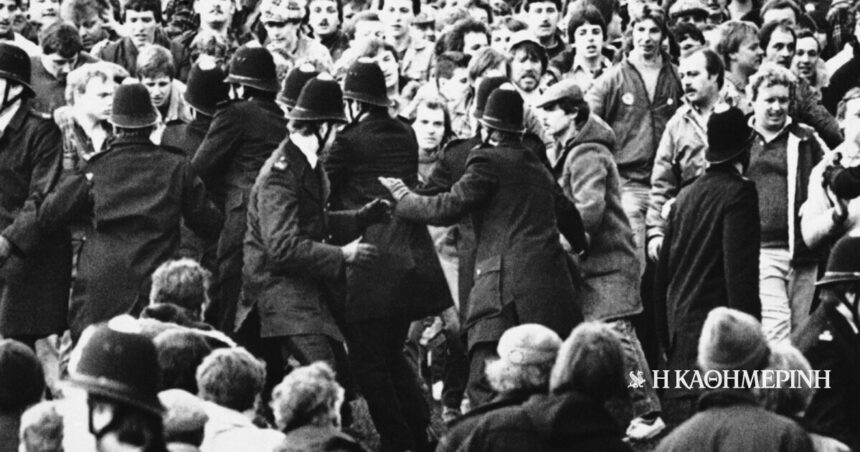The 1980s was marked by deep social and political changes in Britain, with one of the most dramatic moments being the strike of miners in 1984-1985. This conflict, which lasted almost a year, was a turning point for the working class and the role of trade unions in the country. At the heart of this battle were two controversial personalities: the leader of the miners, Arthur Skartzil, and Prime Minister Margaret Thatcher.
The carbon mining industry has been a major pillar of the 19th century British economy. However, by the 1980s, the sector was facing problems due to the decline in demand and increased production costs. Many areas were exclusively dependent on coal mines for their economic survival, especially in the northern and central areas of England, Scotland and Wales.
Margaret Thatcher’s election in 1979 brought a new liberal economic policy aimed at deregulation of industries, reducing trade union power and promoting private initiative. The Thatcher government ruled that a reduction in carbon dependence was necessary, arguing that many coal mines were unsustainable. This policy, however, was addressed with a strong resistance by unions and communities dependent on carbon extraction.
At the heart of the battle were two controversial personalities: the leader of the miners, Arthur Skartzil, and Prime Minister Margaret Thatcher.
‘Battle for the future of our children’
Arthur Skartzil, president of the National Union of miners (NUM), was a staunch advocate of labor rights and a warrior of the Thatcher government. Having experience with previous clashes, such as the 1972 strike, Skartzil was determined to resist the proposals for closing the coal mine, which he considered “the first step towards the destruction of the trade unions and the working class in Britain” (The Guardian). In 1984, when the National Council Council announced the plan to close 20 coal mine, Skartzil saw the strike as the only option to defend the industry. However, his strategy faced difficulties. The decision not to take a formal vote on the strike has weakened the legalization of the struggle, while the absence of unity among the miners limited the effectiveness of mobilization. Despite the difficulties, Skartzil remained an emblematic figure. He saw the strike as a battle not only for the survival of the miners, but also for the resistance to Thatcher’s authoritarian approach. As he said in a press conference in March 1984, “this strike is a battle for the maintenance of our industry, our communities and the future of our children.” However, his tactics, such as the absolute rejection of compromises, have caused criticism, even by members of Num himself.

‘Strikers are inner enemies’
Margaret Thatcher, for her part, treated the strike as an opportunity to demonstrate its government, as well as to limit the power of trade unions, which she considered responsible for the economic stagnation of the 1970s. Prepared for conflict, had already stored the government. Thatcher described the strikers as “internal enemies” (“we will face with the same determination we also faced with the external enemy in the Falkland War”), intensifying the conflict, and describing it as “not only as an economic conflict, but as a battle for the democracy” 1984). The government, convinced that it should not allow “a small part of society to keep the whole country hostage” (Thatcher interview), used extensive police violence to suppress protests, while trying to break up the unity of employees. Its attitude, though effective, left deep wounds in the communities based on the functioning of coal mine.

Pyrrhic victory with long -term social impacts
The strike began in March 1984 and evolved into one of the largest and most violent work conflicts in modern Britain’s history. The use of violence by the police, such as during the “Battle of Orgib”, where dozens were injured, was a reference point for escalating tension. The financial pressure on the strikers and their families were huge. Without wages for months, many families have resorted to the help of local organizations and trade unions. The long strike, however, caused deep divisions within the communities themselves, as many workers returned to work. The strike ended in March 1985 without achieving the goals of the miners. Most communities were found economically and socially weakened, and the closure of coal miners proceeded in the following years.
It is worth noting that the strike received support from many countries, such as France, Sweden and Australia, from which unions and organizations sent financial assistance to British miners. Covering the strike of miners by the press of the time reflected its intensity and divisive aspects. Newspapers such as the Guardian denounced police violence, describing conflicts such as the “Battle of Orgib” as “extreme repression”. The Times highlighted the financial difficulties of the strikers, highlighting poverty and support from local communities. At the same time, government rhetoric, such as Thatcher’s statements that characterized the strikers “internal enemies”, was underlined by conservative means as necessary to protect the economy. On the contrary, progressive forms have highlighted the miners’ struggle as a resistance to the degradation of trade unions and labor rights.

The legacy of the strike
The strike of the 1984-1985 miners remains a symbol of resistance and social injustice in Britain. Thatcher has succeeded in reducing the power of unions, consolidating its liberal economic model. The victory, however, was a Pyrrhus, as it had heavy social costs. Communities dependent on coal mines suffered long -term consequences, such as unemployment, poverty and social dissolution. The strike left behind bitterness and division, while the role of the police and the use of violence are still the subject of debate. Skartzil’s personal heritage also remains controversial. For many, he was a tireless defender of the working class, while for others, his intangible attitude contributed to the defeat of the movement.
The strike of miners has been one of the most divisive and decisive events in the modern history of the country, with profound consequences that affect the political, social and economic life to date. On the one hand, it was a strong confrontation between two opposite visions of society: Margaret Thatcher’s neoliberal economic program and the collective resistance of the working class, led by Arthur Skartzil. On the other hand, it revealed the strengths and weaknesses of the unions as a means of social resistance in a time of growing globalization and deregulation.
The strike was not just a battle for maintaining jobs in the coal mines; it was a symbol of the broader conflict between trade unions and the new order of things that Thatcher promoted. The result of the conflict was decisive: the miners were defeated, the unions were weakened and the carbon industry shrunk dramatically, leaving communities behind social and economic impasses. The legacy of the strike, however, exceeds the defeat of the miners. Its social, cultural and political consequences continue to be the subject of study and discussion. The strike was a turning point for the government’s relationship with trade unions in Britain. The dramatic weakening of NUM and other trade unions was crucial to the implementation of neoliberal reforms that radically changed labor law and economic policy in the country.
Mr. Alexandros Nafpliotis is a Doctor of International History of London School of Economics and Political Science and teaches diplomatic history at the Hellenic Open University.
EDUCATION: Evanthis Hatzivasiliou




